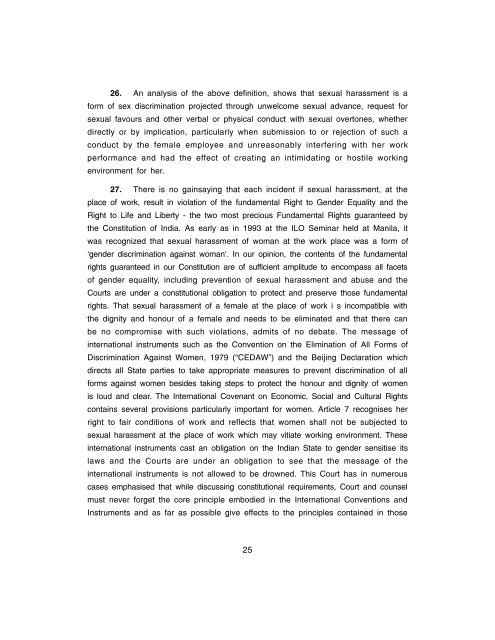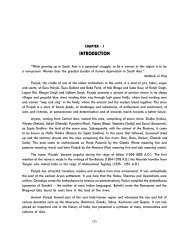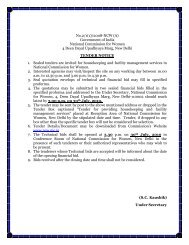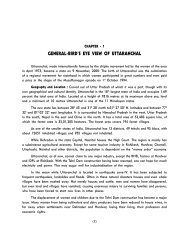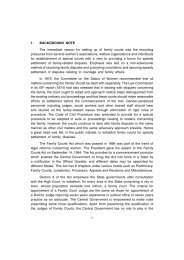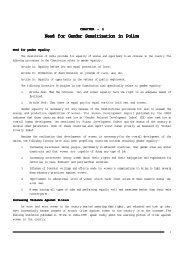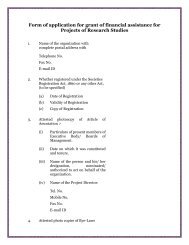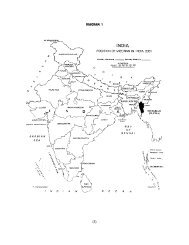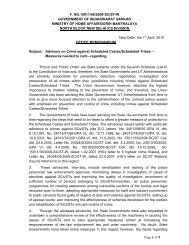Vishaka and others V. State of Rajasthan and others.
Vishaka and others V. State of Rajasthan and others.
Vishaka and others V. State of Rajasthan and others.
- No tags were found...
You also want an ePaper? Increase the reach of your titles
YUMPU automatically turns print PDFs into web optimized ePapers that Google loves.
26. An analysis <strong>of</strong> the above definition, shows that sexual harassment is aform <strong>of</strong> sex discrimination projected through unwelcome sexual advance, request forsexual favours <strong>and</strong> other verbal or physical conduct with sexual overtones, whetherdirectly or by implication, particularly when submission to or rejection <strong>of</strong> such aconduct by the female employee <strong>and</strong> unreasonably interfering with her workperformance <strong>and</strong> had the effect <strong>of</strong> creating an intimidating or hostile workingenvironment for her.27. There is no gainsaying that each incident if sexual harassment, at theplace <strong>of</strong> work, result in violation <strong>of</strong> the fundamental Right to Gender Equality <strong>and</strong> theRight to Life <strong>and</strong> Liberty - the two most precious Fundamental Rights guaranteed bythe Constitution <strong>of</strong> India. As early as in 1993 at the ILO Seminar held at Manila, itwas recognized that sexual harassment <strong>of</strong> woman at the work place was a form <strong>of</strong>‘gender discrimination against woman’. In our opinion, the contents <strong>of</strong> the fundamentalrights guaranteed in our Constitution are <strong>of</strong> sufficient amplitude to encompass all facets<strong>of</strong> gender equality, including prevention <strong>of</strong> sexual harassment <strong>and</strong> abuse <strong>and</strong> theCourts are under a constitutional obligation to protect <strong>and</strong> preserve those fundamentalrights. That sexual harassment <strong>of</strong> a female at the place <strong>of</strong> work i s incompatible withthe dignity <strong>and</strong> honour <strong>of</strong> a female <strong>and</strong> needs to be eliminated <strong>and</strong> that there canbe no compromise with such violations, admits <strong>of</strong> no debate. The message <strong>of</strong>international instruments such as the Convention on the Elimination <strong>of</strong> All Forms <strong>of</strong>Discrimination Against Women, 1979 (“CEDAW”) <strong>and</strong> the Beijing Declaration whichdirects all <strong>State</strong> parties to take appropriate measures to prevent discrimination <strong>of</strong> allforms against women besides taking steps to protect the honour <strong>and</strong> dignity <strong>of</strong> womenis loud <strong>and</strong> clear. The International Covenant on Economic, Social <strong>and</strong> Cultural Rightscontains several provisions particularly important for women. Article 7 recognises herright to fair conditions <strong>of</strong> work <strong>and</strong> reflects that women shall not be subjected tosexual harassment at the place <strong>of</strong> work which may vitiate working environment. Theseinternational instruments cast an obligation on the Indian <strong>State</strong> to gender sensitise itslaws <strong>and</strong> the Courts are under an obligation to see that the message <strong>of</strong> theinternational instruments is not allowed to be drowned. This Court has in numerouscases emphasised that while discussing constitutional requirements, Court <strong>and</strong> counselmust never forget the core principle embodied in the International Conventions <strong>and</strong>Instruments <strong>and</strong> as far as possible give effects to the principles contained in those25


